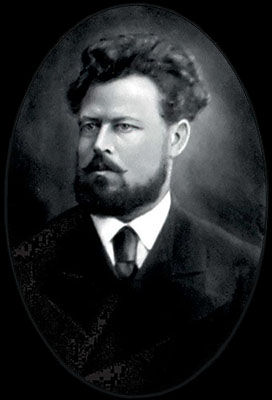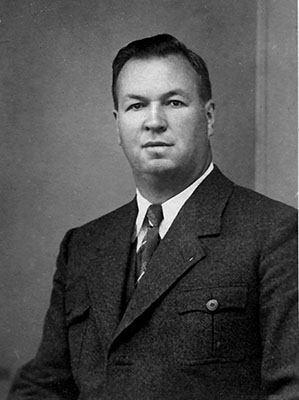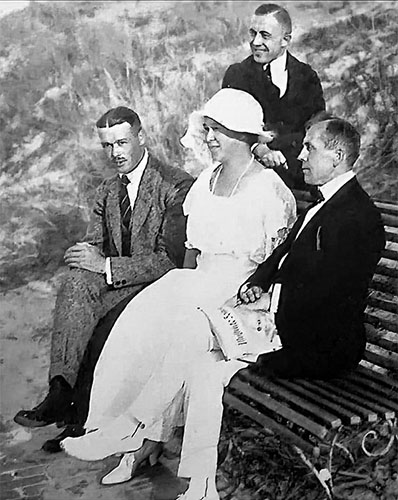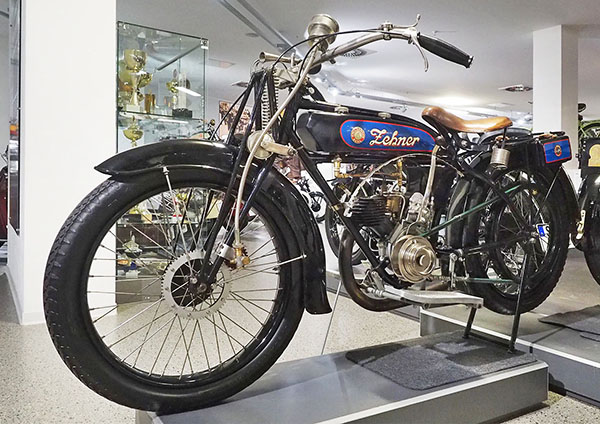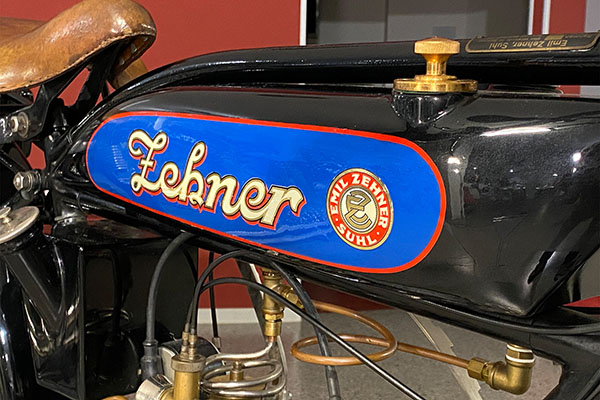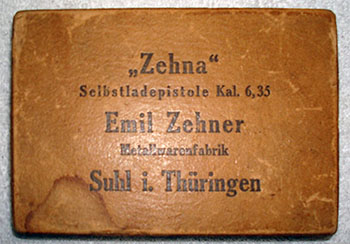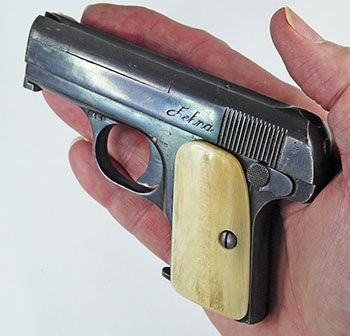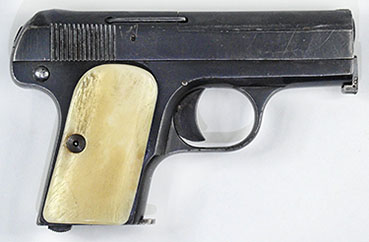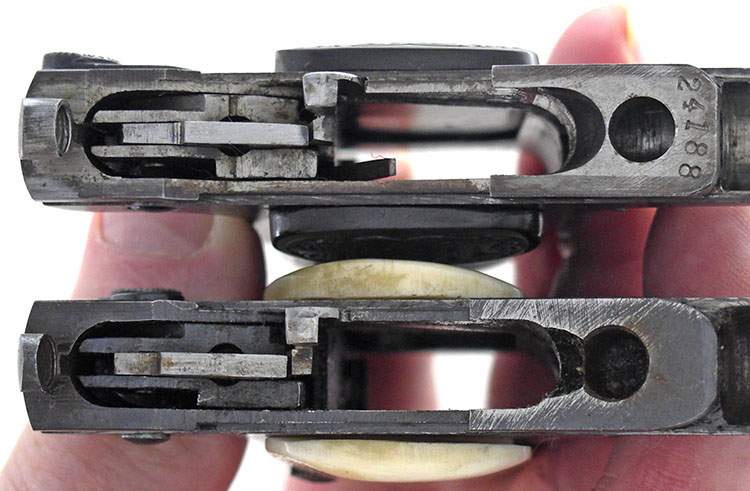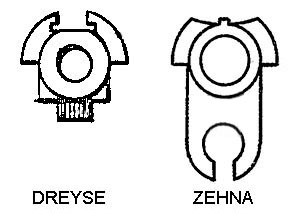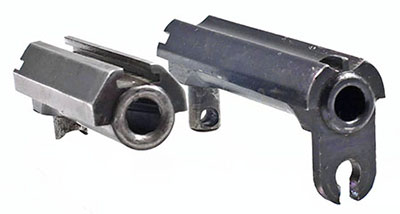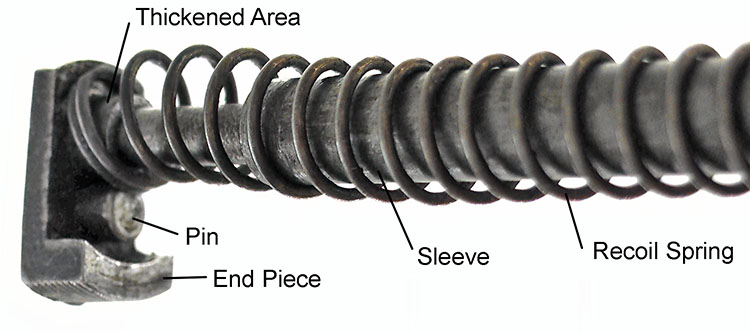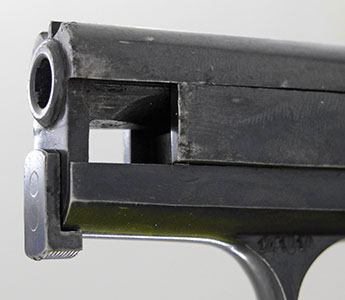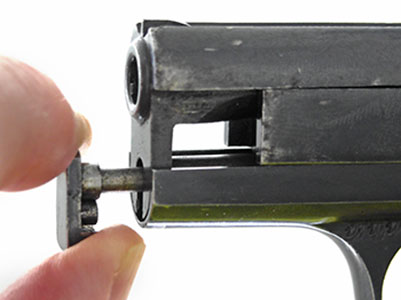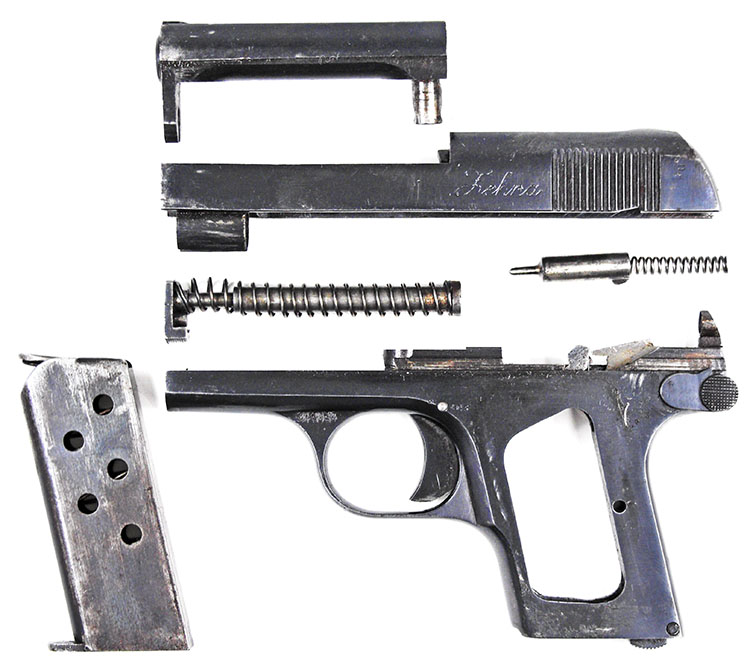 |
||||||||||||||||||||||||||||||||||||||||||||||||||||||||||||||||||||||||||||||||||||||||||||||||||||||||||||||||||||||||||||||||||||||||||||||||||||||||||||||||||||||||||||||||||||||||||||||||||||||||||||||||||||||||||||||||||||||||||||||||||||||||||||||||||||||||||||||||||||||||||||||||||||||||||||||||||||||||||||||||||||||
|
The Zehna Pistol by Ed Buffaloe
There is not a lot of information available about the Zehna pistol. Most sources agree that it was made sometime between 1920 and 1928. Emil Zehner, His Family, and His Company
Christian Emil Zehner was born in Suhl on 22 August 1845. He married his wife, Albertine Maria Amalie Arnim, in Finland in 1882, and the couple’s first four children, Emil, Albert, Otto, and Friedrich, were born in Kuokala, Finland between 1883 and 1888. They may have lived in St. Petersburg for a time before moving the family to Suhl in 1890. Their two youngest children, Nelli Caroline Mathilde Zehner and Wilhelm Albert Alexander Zehner, were born in Suhl in 1891 and 1894, respectively. Christian Emil Zehner had a brother who was the father of Christian Friedrich (Fritz) Zehner (1866 -1946). This is the Fritz Zehner who became the chief weapon designer for Sauer & Sohn and was responsible for all their handgun designs from 1913 through 1938 In 1893, at the age of 48, Emil Zehner patented a machine for the manufacture of drill bits. (The book Patentblatt: herausgegeben von dem Kaiserl. Patentamt, Volume 18, p. 296 lists the following patent: “Z.1767. Maschine zur Herstellung von Spiral-bohrern durch Ziehen im Drall [machine for the production of drill bits]—Emil Zehner in Suhl i. Th. 14 September 1893.”) On 14 September 1901, at the age of 56, Emil Zehner filed a patent for “gas-permeable core pieces for metal casting”, which was a device and method for eliminating gas bubbles in the casting of metal tubes. This patent (German patent 137084) was granted on 12 December 1902.
There is evidence, from the online Archive of Thuringia, that Zehner founded his company, Emil Zehner Metallwarenfabrik und Tempergiesserei [Emil Zehner Metalware Factory and Cast Iron Foundry], in 1909. He may have owned a different company before this or quite possibly he worked for someone else. Emil Zehner’s daughter, Nelli Caroline Mathilde Zehner, age 22, married Hugo Schmeisser on 8 November 1913. Hugo was 29 and working for Theodor Bergmann. Hugo was the inventor of the Bergmann MP18 machine pistol (or submachine gun) which was introduced at the very end of World War I in 1918, and he went on to design the MP-43 submachine gun during World War II. Hugo’s brother, Hans, is credited with the design of the Haenel Schmeisser 6.35mm pistol. Hugo was taken to Russia after World War II to work on weapon designs for the Russians. He was repatriated in 1952 and, in poor health after his time in Russia, died in 1953. He is buried in the Zehner family cemetery in Suhl.
John Walter, in his Dictionary of Guns and Gunmakers, has the following listing: “Emil Zehner, Suhl, Thüringen. This German ‘gunsmith’ is recorded in the 1914 Deutsches Reichs-Adressbuch as a specialist screw maker.” Die Werkzeugmaschine: Zeitschrift fur praktischen Fabrikbetrieb [The Machine Tool: Journal of Practical Factory Operation], for 15 March 1916, features an advertisement for the Metallwarenfabrik und Tempergieißerei Emil Zehner, Suhl im Thüringen. The advertisement states that the company specializes in quality casting, precision machine work, screws, fittings, and drill bits.
Emil Zehner died in Suhl on 21 July 1919. His youngest son, Wilhelm Albert Alexander Zehner, took over the company upon his father’s death. It was certainly Wilhelm Albert Alexander who filed the 1920 and 1921 patents mentioned below, and possibly the 1919 patent as well. He continued operating the company, under his father’s name, until the arrival of the Russians after World War II, who took everything. In 1924 Wilhelm Albert Alexander Zehner founded the company Emil Zehner Motorradbau to manufacture a light motorcycle designed by Otto Dehne, who filed patents between 1921 and 1924 for an adjustable handlebar, gearbox, and belt drive, some of which were incorporated into the 197cc Zehner motorcycle. This company only lasted through 1926, so the motorcycle is extremely rare.
We may never know the details surrounding the similarities between the Zehna, Haenel Schmeisser, and 6.35mm Dreyse pistols, but I think we can assume that some arrangement was reached, between Schmeisser family members and Zehner in-laws, to allow similar guns to be made from the same basic frame and lockwork design. In each case, the patented portion of the gun is the method of barrel retention and disassembly, and that is the only major difference between the three. The frames of the three pistols are virtually identical, and many other components as well.
Of the three patents that Emil Zehner filed for guns in Germany in 1919 and 1920, one, patent number 350727, was filed under the company name “Emil Zehner, Metallwarenfabrik u. Tempergießerei in Suhl i. Th. [Metalware Factory and Cast Iron Foundry in Suhl, Thuringia].” This is identical to the name in the above advertisement. In the other two patents, numbers 358103 and 378452, the company name is simplified to “Emil Zehner, Metallwarenfabrik in Suhl i. Th. [Metalware Factory in Suhl, Thuringia].” This is how the box for the Zehna pistol is marked.
In fact, internally, the Zehna pistol is an almost exact copy of the 6.35mm Dreyse pistol. Its trigger, sear, safety, striker, transfer bar, and disconnector could easily have been made from leftover Dreyse parts. The Haenel Schmeisser has some differences in the way the sear is mounted and has different springs for the sear and magazine release, but the trigger, sear, safety, transfer bar, and disconnector are nearly identical between the three pistols. The Schmeisser has a cocking indicator which is lacking on the Dreyse and the early Zehna pistols, but it was added to the late Zehna pistol.
Mathews provides the following information: “The Zehna pistol...was designed by Emil Zehner in about 1919-1920 and prototype forms were made in 1920 and perhaps in early 1921. When commercially produced, in mid-1921, the pistol differed somewhat from the prototypes.” Mathews does not provide photographs or any further information about prototypes, nor does he give a source for his information. If Zehner filed his patent on 6 September 1919, it seems likely that he had a working prototype at that time. I own a prototype Zehna pistol, and I have photographs of another that sold on Gunbroker.com. There are probably more yet to be identified.
Of the two prototypes I have documented, both have the word Zehna hand engraved in script on the left side in front of the slide serrations. Neither has an external serial number, but one has parts stamped with the number 8 and the other with the number 9. Both have the standard crown over N German nitro proofs, but no other markings. Neither gun came with the EZ monogram grips.
There are differences, of course: the early Dreyse pistol had a magazine safety (visible in the magazine well); the backstop for the striker spring is longer on the Dreyse; the frame and slide of the Zehna are longer than those of the Dreyse; and the Dreyse does not lock the barrel to the frame. Whereas the Dreyse barrel is connected to the breech block portion of the slide by what the British patent calls a “sliding or otherwise movable locking bar,” the Zehna locks the barrel to the frame at the bottom, both front and rear, both in the prototype and as shown in the patent.
In any case, the only changes necessary to make the first variant production gun were removal of the front barrel lug, a redesign of the plate at the front of the recoil spring, a redesign of the front of the barrel, and an additional hole drilled in the front of the frame to accommodate the repositioned pin on the back of the plate.
|
||||||||||||||||||||||||||||||||||||||||||||||||||||||||||||||||||||||||||||||||||||||||||||||||||||||||||||||||||||||||||||||||||||||||||||||||||||||||||||||||||||||||||||||||||||||||||||||||||||||||||||||||||||||||||||||||||||||||||||||||||||||||||||||||||||||||||||||||||||||||||||||||||||||||||||||||||||||||||||||||||||||
|
Copyright 2008-2022 by Ed Buffaloe. All rights reserved. |
||||||||||||||||||||||||||||||||||||||||||||||||||||||||||||||||||||||||||||||||||||||||||||||||||||||||||||||||||||||||||||||||||||||||||||||||||||||||||||||||||||||||||||||||||||||||||||||||||||||||||||||||||||||||||||||||||||||||||||||||||||||||||||||||||||||||||||||||||||||||||||||||||||||||||||||||||||||||||||||||||||||
|
||||||||||||||||||||||||||||||||||||||||||||||||||||||||||||||||||||||||||||||||||||||||||||||||||||||||||||||||||||||||||||||||||||||||||||||||||||||||||||||||||||||||||||||||||||||||||||||||||||||||||||||||||||||||||||||||||||||||||||||||||||||||||||||||||||||||||||||||||||||||||||||||||||||||||||||||||||||||||||||||||||||
|
|
||||||||||||||||||||||||||||||||||||||||||||||||||||||||||||||||||||||||||||||||||||||||||||||||||||||||||||||||||||||||||||||||||||||||||||||||||||||||||||||||||||||||||||||||||||||||||||||||||||||||||||||||||||||||||||||||||||||||||||||||||||||||||||||||||||||||||||||||||||||||||||||||||||||||||||||||||||||||||||||||||||||
